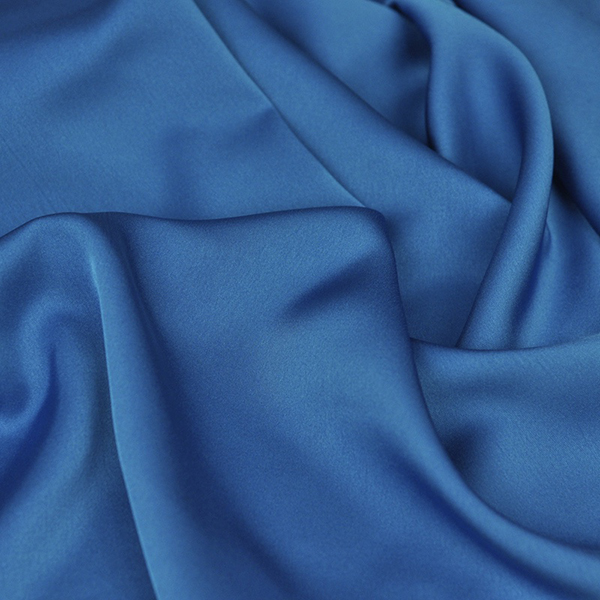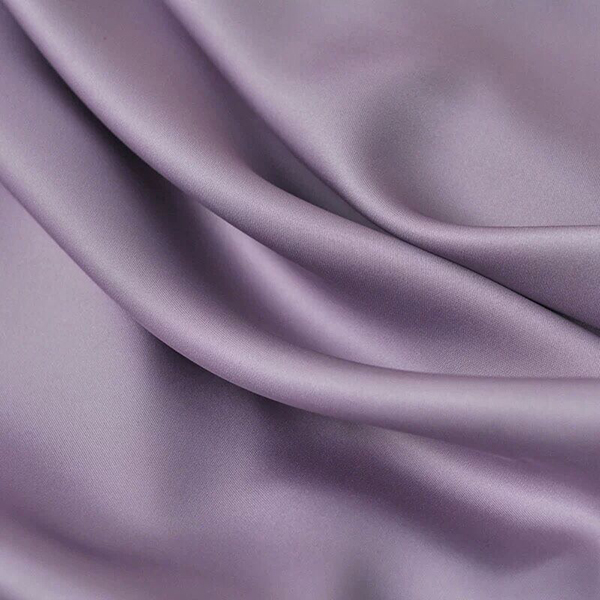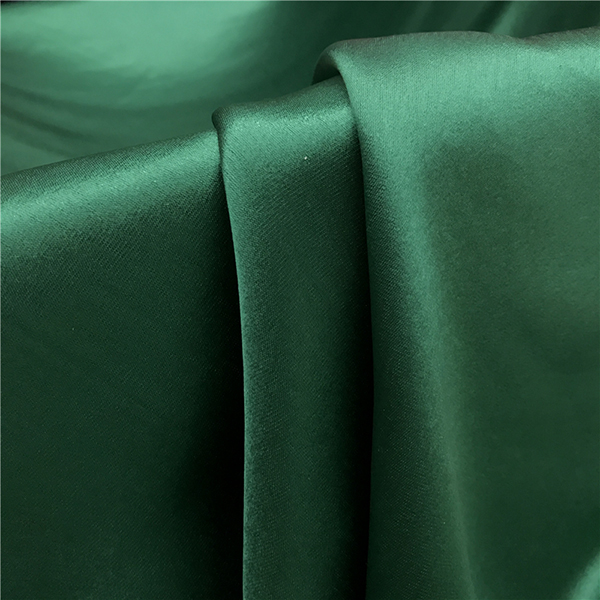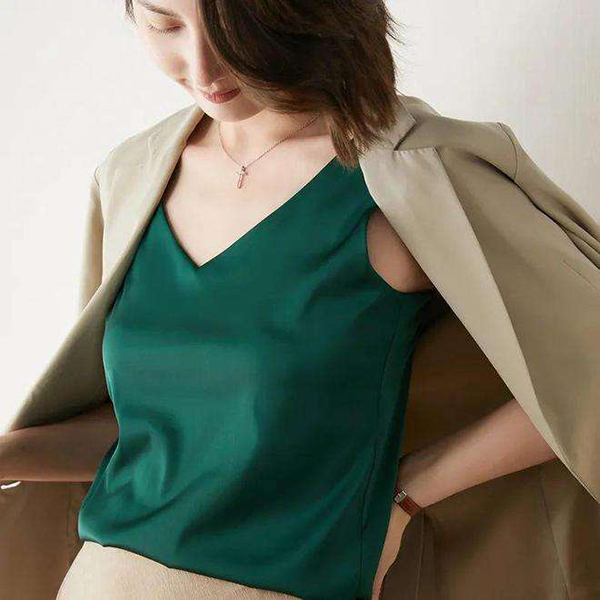Acetate fabric, commonly known as acetate cloth, also known as Yasha, is the Chinese homophonic pronunciation of English ACETATE. Acetate is a man-made fiber obtained by esterification with acetic acid and cellulose as raw materials. Acetate, which belongs to the family of man-made fibers, likes to imitate silk fibers. It is manufactured by advanced textile technology, with bright colors and bright appearance. The touch is smooth and comfortable, and the luster and performance are close to those of mulberry silk.



Compared with natural fabrics such as cotton and linen, acetate fabric has better moisture absorption, air permeability and resilience, no static electricity and hairballs, and is comfortable against the skin. It is very suitable for making noble dresses, silk scarves, etc. At the same time, acetate fabric can also be used to replace natural silk to make various high-end brand fashion linings, such as trench coats, leather coats, dresses, cheongsams, wedding dresses, Tang suits, winter skirts and more! So everyone regards it as a substitute for silk. Its traces can be seen in the lining of skirts or coats.

Acetate fiber is a natural substance extracted from wood pulp cellulose, which is the same chemical molecular component as cotton fiber, and acetic anhydride as raw materials. It can be used for spinning and weaving after a series of chemical processing. Acetate filament fiber, which takes cellulose as the basic skeleton, has the basic characteristics of cellulose fiber; but its performance is different from that of regenerated cellulose fiber (viscose cupro silk), and has some characteristics of synthetic fiber :
1. Good thermoplasticity: The acetate fiber softens at 200℃~230℃ and melts at 260℃. This feature makes the acetate fiber have thermoplasticity similar to that of synthetic fibers. After plastic deformation, the shape will not recover, and the deformation will be permanent. Acetate fabric has good formability, can beautify the curve of the human body, and is overall generous and elegant.
2. Excellent dyeability: Acetate fiber can usually be dyed with disperse dyes, and has good coloring performance and bright colors, and its coloring performance is better than other cellulose fibers. Acetate fabric has good thermoplasticity. The acetate fiber softens at 200 ° C ~ 230 ° C and melts at 260 ° C. Similar to synthetic fibers, the shape will not recover after plastic deformation, and it has permanent deformation.
3. Appearance like mulberry silk: The appearance of acetate fiber is similar to that of mulberry silk, and its soft and smooth hand feel is similar to that of mulberry silk. Its specific gravity is the same as that of mulberry silk. The fabric woven from acetate silk is easy to wash and dry, and has no mildew or moth, and its elasticity is better than viscose fiber.


4. The performance is close to that of mulberry silk: compared with the physical and mechanical properties of viscose fiber and mulberry silk, the strength of acetate fiber is lower, the elongation at break is larger, and the ratio of wet strength to dry strength is lower, but higher than that of viscose silk. , the initial modulus is small, the moisture regain is lower than that of viscose fiber and mulberry silk, but higher than that of synthetic fiber, the ratio of wet strength to dry strength, relative hooking strength and knotting strength, elastic recovery rate, etc. big. Therefore, the properties of acetate fiber are closest to that of mulberry silk among chemical fibers.
5. Acetate fabric is not electrified; it is not easy to absorb dust in the air; dry cleaning, water washing and machine hand washing below 40 ℃ can be used, which overcomes the weakness of silk and wool fabrics that are often bacteria-carrying; dusty and can only be dry-cleaned, and no wool fabrics are easy to be eaten by insects. The disadvantage is that it is easy to care for and collect, and the acetate fabric has the resilience and smooth feel of woolen fabrics.
Others: Acetate fabric has and surpasses cotton and linen fabrics with various properties, such as moisture absorption and breathability, no sweat, easy to wash and dry, no mildew or moth, comfortable against the skin, absolutely environmentally friendly, etc.
Post time: May-07-2022
